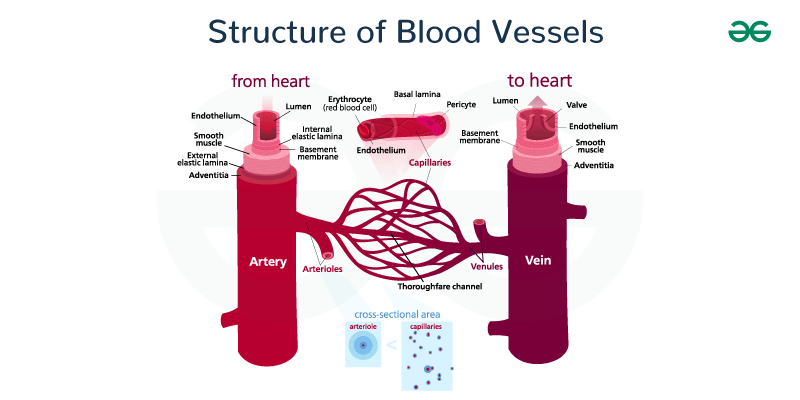Blood Vessels |
The circulatory system has three types of vessels. The arteries, which tranfer blood from the heart to the rest of the body, the capillaries, which make possible the trade of substances with tissues, and the veins, which take the blood back to the heart. The capillaries interfere between the arteries and the veins. At all times, veins contain the 75%, arteries the 20%, and capillaries the 5% of blood in our body. The total length of all arteries, veins, and capillaries in the human body is about 100,000 km.

Arteries have thick walls and a smaller internal diameter from the one of veins, because they have more muscle tissue. Since the blood in arteries travels with a bigger speed than it does in veins, it also has a higher pressure. The blood enters the arteries with every contraction of the heart's ventricles. Whenever that happens, the walls of the arteries get larger with the pressure of the incoming blood. This process is called pulse. Every beat of the heart causes a pulse in the arteries, so the beats and pulses are always equal in number.
The biggest arteries of the body are the aorta and the pulmonary artery. All the other arteries are ramifications of the above, called arterioles.
Veins are much more numerous than arteries and have no pulse. In the inside, veins have valves which make sure there is a one-way blood flow, so the blood is forced to move in the direction of the heart. Venules are small veins which also work to bring blood to the heart. The 2/3 of a person's blood are contained in veins and venules. In other words veins could be characterised as the blood tanks of the body.